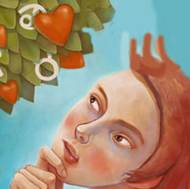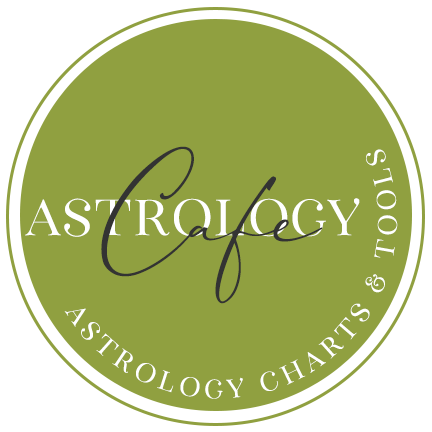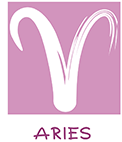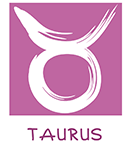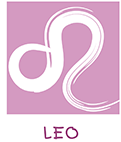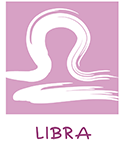Relationship Astrology Tips
Tips for interpretation
Perhaps every astrologer, after years of experience with Relationship Astrology, has their own guidelines and tips—things that jump out at them as they examine a relationship astrologically—whether or not the astrologer has taken the time to verbalize them. I am no exception, of course.
In this article, I am presuming the relationship being studied is a love/romantic one. Different emphases would be placed if we were studying a friendship, parent/child relationship, business relationship, and so forth.
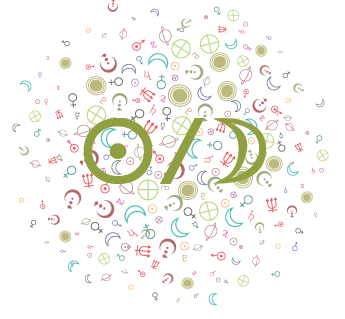
One of the first things I look for is a Sun-Moon interaspect. Does the Sun in A’s chart form a major aspect with the Moon in B’s chart, or vice versa? If not, or even if so, I look to the Sun/Moon midpoint of both A and B’s chart. Does A’s Sun/Moon midpoint tightly conjunct or oppose a personal planet in B’s chart, or vice versa? I consider any aspect in multiples of 45 degrees to the Sun/Moon midpoint significant as well.
In the composite chart, do the Sun and Moon form a major aspect?
The Sun-Moon rule of thumb is an old one, but it seems to point to very significant relationships. If the answer is “no” to these questions, I certainly don’t rule out a powerful relationship. If the answer is “yes” to one or more of these questions, I presume I am dealing with a relationship of considerable impact on the lives of the individuals involved.
If the relationship involves sharing a home or spending a lot of time together, the Moon is of powerful importance in synastry. I take note of the aspects formed between the Moon in A’s chart and planets/points in B’s chart, and vice versa. Unaspected or severely challenged interaspects involving the Moon, as well as unaspected or severely challenged aspects to the composite Moon, point to serious obstacles. Either or both individuals may ultimately find the relationship unsatisfying on a basic level in either of these scenarios.
I look to the overlay of A’s planets on B’s houses, and vice versa, although I skip this “step” if any of the individual’s birth times are questionable. How does A view B? I can get a good idea by overlaying A’s planets (especially Sun, Moon, Venus, and Mars) onto B’s chart and finding the houses A’s planets fall in.
I have found that when A’s personal planets, especially more than one, fall in B’s 12th house, there can be a general mistrust of B that is hard to overcome. This is one factor that I tend to view as a “warning sign”. As with all difficult positions in astrology, the resolution of conflicts will depend greatly on the enlightenment of the persons involved.
Saturn in synastry and in the composite chart is one of the heavyweights. An excellent book that explores Saturn in general, with one chapter devoted to Saturn in synastry, is Saturn : a New Look at an Old Devil (affiliate link to Amazon). I found this work extremely meaningful. Saturn with respect to synastry represents ties to one another that are binding–not always pleasant, but binding! There are almost always strong Saturn interaspects in significant, long-term relationships, but we don’t want the relationship to be too Saturn-laden.
Uranus, Neptune, and Pluto’s roles in synastry are considered by some as signifying karmic connections. When I see, for example, A’s outer planets (and/or Saturn) forming powerful aspects to B’s personal planets and points, I tend to view A as the person with more upper hand in terms of how the relationship will play out, for good or bad.
The Vertex is an important point in synastry, tending to bring up a feeling of fated-ness. A conjunction or opposition of A’s personal planet to B’s Vertex is especially powerful. The attraction is very strong in this case.
The Nodes of the Moon tend to be very significant in synastry. Strong Nodal ties are powerful. The individuals are drawn to each other. In the natal chart, the Nodal axis suggests powerful lessons an individual needs to learn in this lifetime, and when A’s Nodal axis falls on personal planets or points in B’s chart, the magnetism is powerful indeed. Perhaps B will play a large role in A’s life, and either represent or force A to live out some of the issues inherent in the condition of the Nodal axis.
Important note about the Nodes in synastry:
If person A’s planet (especially a personal planet) conjuncts B’s South Node, the connection is there, no doubt. Person A will feel extremely comfortable with person B, at first. However, person A will eventually feel that the relationship drains him/her of energy, and may feel the need to move on and release him/herself from the relationship, as the relationship pulls him/her into the past.
We all face our North Node issues at some point in our lives (we often start the process in our 30’s!). If another person is emphasizing our South Node without equal or greater aspects to our North Node, we may feel held back and “outgrow” that person!
Coffee Cup with a Love Constellation from the article, Relationship Astrology Tips
Also note that there can be some uneasiness and hesitance when the Nodes, especially North Nodes, are strongly contacted by the planets and points of another person. The magnetism can be strong (and it isn’t necessarily sexual, occurring in platonic friendships and relationships as well), but a certain amount of fear can be present (on the part of the Node person).
One way of looking at Nodal contacts in synastry: A person’s planet conjunct your North Node is pulling you forward, toward lessons that you need in order for spiritual growth and happiness. But you may be somewhat reluctant to face these issues, depending on “where you’re at” in the path. A person’s planet conjunct your South Node is pulling you back into familiar territory. There is something “easy” about the relationship, and the lure can be strong, although you may eventually sense that you need something more, which can be viewed as “outgrowing” the relationship or even the person.
Saturn conjunct the Nodes can be a separative aspect. I am not as yet certain of exactly why this is the case, but I have seen it time and time again where Saturn conjunct the North or South Node in a composite chart or in synastry is present in romantic relationships that don’t get off the ground properly.
Next: Summary of Relationship Astrology Techniques
Back to Synastry article.
Intermediate and advanced students of Astrology might enjoy our article, SoulMate Astrology.
Don’t know the positions of your planets? Be sure to find out your personal astrology data online, at no cost.
THE ASTROLOGY OF LOVE & ATTRACTION: ARTICLES & GUIDES
Cafe Astrology. Some tips for students of relationship Astrology and Synastry. Nodes, Sun-Moon midpoint, Saturn in synastry.
